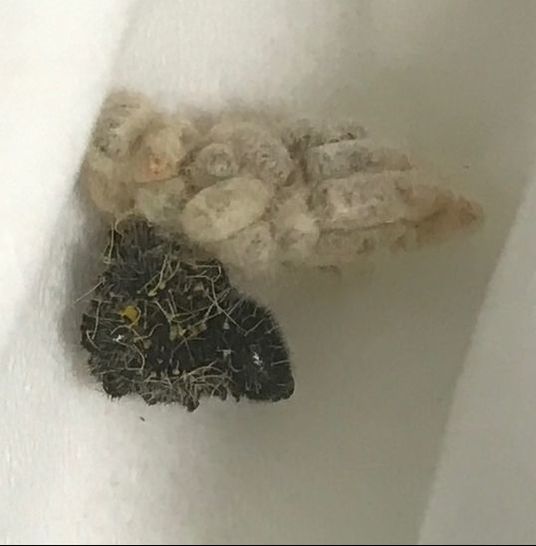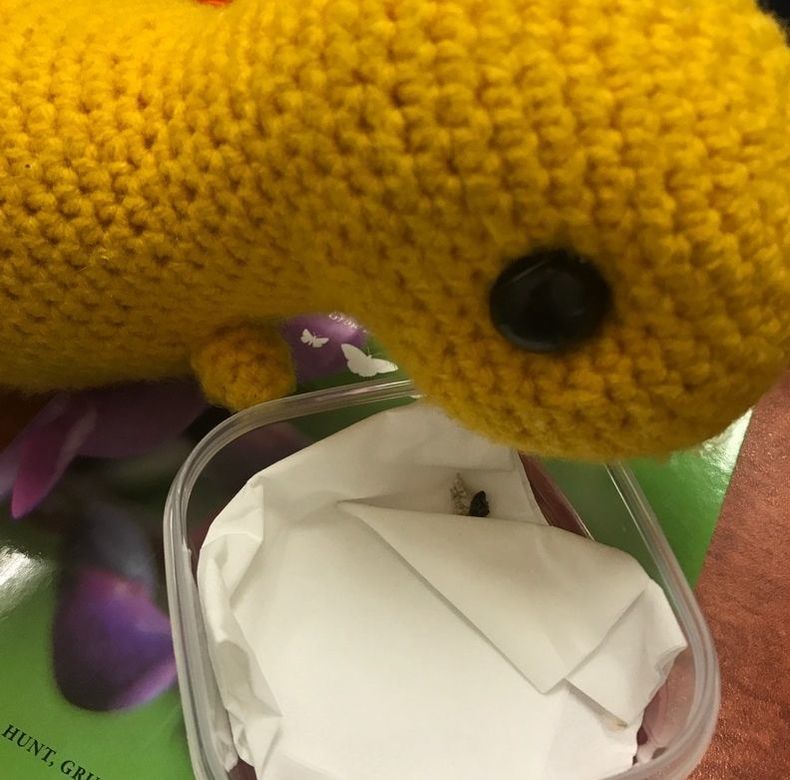We're excited to see the wasps hatch, so we're watching them closely in anticipation!
|
Today we're babysitting wasps. Our friends at the Bible Museum Butterfly Garden sent us some wasp pupae, so Mustard is diligently keeping a close eye on them to see what emerges! The life cycle of these parasitic wasps means that the baby wasps (which look like tiny white grubs) live inside a doomed caterpillar, feeding on it's flesh until the wasps are big enough to eat their way out and spin cocoons to metamorphose inside of (just like a caterpillar does when it turns into a butterfly). These babies are slowly changing themselves from being weird white grubs, to weird black wasps! The black lump in the photos is the dead caterpillar, and the white rice shaped things are the cocoons, stuck together in a mass.
We're excited to see the wasps hatch, so we're watching them closely in anticipation!
4 Comments
Caitlin
11/4/2017 10:10:43 pm
Do they have to stay at a particular temperature or humidity to incubate properly? Do the wasp grubs always form their cocoons right next to each other in a clump like the ones in the picture, or do they crawl away from each other and spin cocoons that hang from branches or leaves like caterpillars? What will you and Mustard do with the wasps when they hatch?
Reply
Erinn
12/4/2017 03:09:54 pm
I don't know about the temperature/humidity, but I assume not as they'd normally be just chilling outside in the environment. They do normally clump together, as it helps provide protection from parasitoids - sometimes the caterpillar will even spin another layer of silk over the top before it dies... zombie mind control! Some species of wasp are different though - they might be solitary (only one of them in the caterpillar in the first place) or they might spin cocoons attached to the caterpillar in different places - like in this photo: http://www.alexanderwild.com/Insects/Stories/Parasites-1/i-8nxWZgr/A
Reply
Sigourney
12/4/2017 10:29:54 am
What happens if you miss it? Can the wasps fly as soon as they hatch? How long do you think it will take?
Reply
Erinn
12/4/2017 03:12:17 pm
Well nothing disastrous happens. But I want to know, as accurately as possible, the time since emergence. So if I make sure I'm looking at least every hour or so, I can say 'this wasp has been out of its cocoon for say, 5 hours +/- an hour. So the closer we watch them the more accurate our time since emergence will be for future experiments. They will probably fly really soon after emergence - they might need a small amount of time to dry their wings out, but I wouldn't think it would be for long!
Reply
Leave a Reply. |
AuthorPhD student and her trusty dinosaur explore the world of science. Check out our Citizen Science Project, The Caterpillar Conundrum! Archives
July 2016
Categories
All
|


 RSS Feed
RSS Feed
